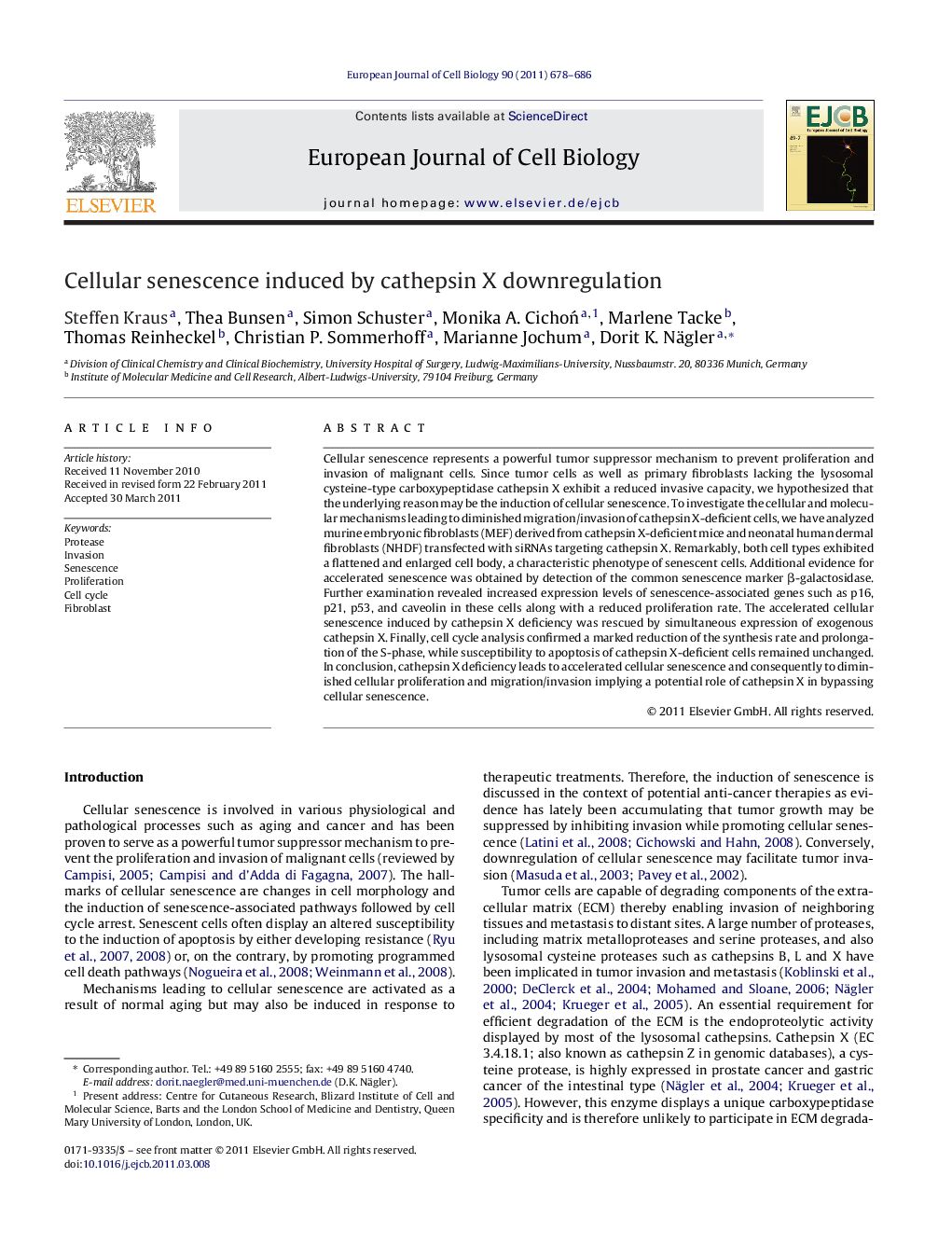| Article ID | Journal | Published Year | Pages | File Type |
|---|---|---|---|---|
| 2178742 | European Journal of Cell Biology | 2011 | 9 Pages |
Cellular senescence represents a powerful tumor suppressor mechanism to prevent proliferation and invasion of malignant cells. Since tumor cells as well as primary fibroblasts lacking the lysosomal cysteine-type carboxypeptidase cathepsin X exhibit a reduced invasive capacity, we hypothesized that the underlying reason may be the induction of cellular senescence. To investigate the cellular and molecular mechanisms leading to diminished migration/invasion of cathepsin X-deficient cells, we have analyzed murine embryonic fibroblasts (MEF) derived from cathepsin X-deficient mice and neonatal human dermal fibroblasts (NHDF) transfected with siRNAs targeting cathepsin X. Remarkably, both cell types exhibited a flattened and enlarged cell body, a characteristic phenotype of senescent cells. Additional evidence for accelerated senescence was obtained by detection of the common senescence marker β-galactosidase. Further examination revealed increased expression levels of senescence-associated genes such as p16, p21, p53, and caveolin in these cells along with a reduced proliferation rate. The accelerated cellular senescence induced by cathepsin X deficiency was rescued by simultaneous expression of exogenous cathepsin X. Finally, cell cycle analysis confirmed a marked reduction of the synthesis rate and prolongation of the S-phase, while susceptibility to apoptosis of cathepsin X-deficient cells remained unchanged. In conclusion, cathepsin X deficiency leads to accelerated cellular senescence and consequently to diminished cellular proliferation and migration/invasion implying a potential role of cathepsin X in bypassing cellular senescence.
